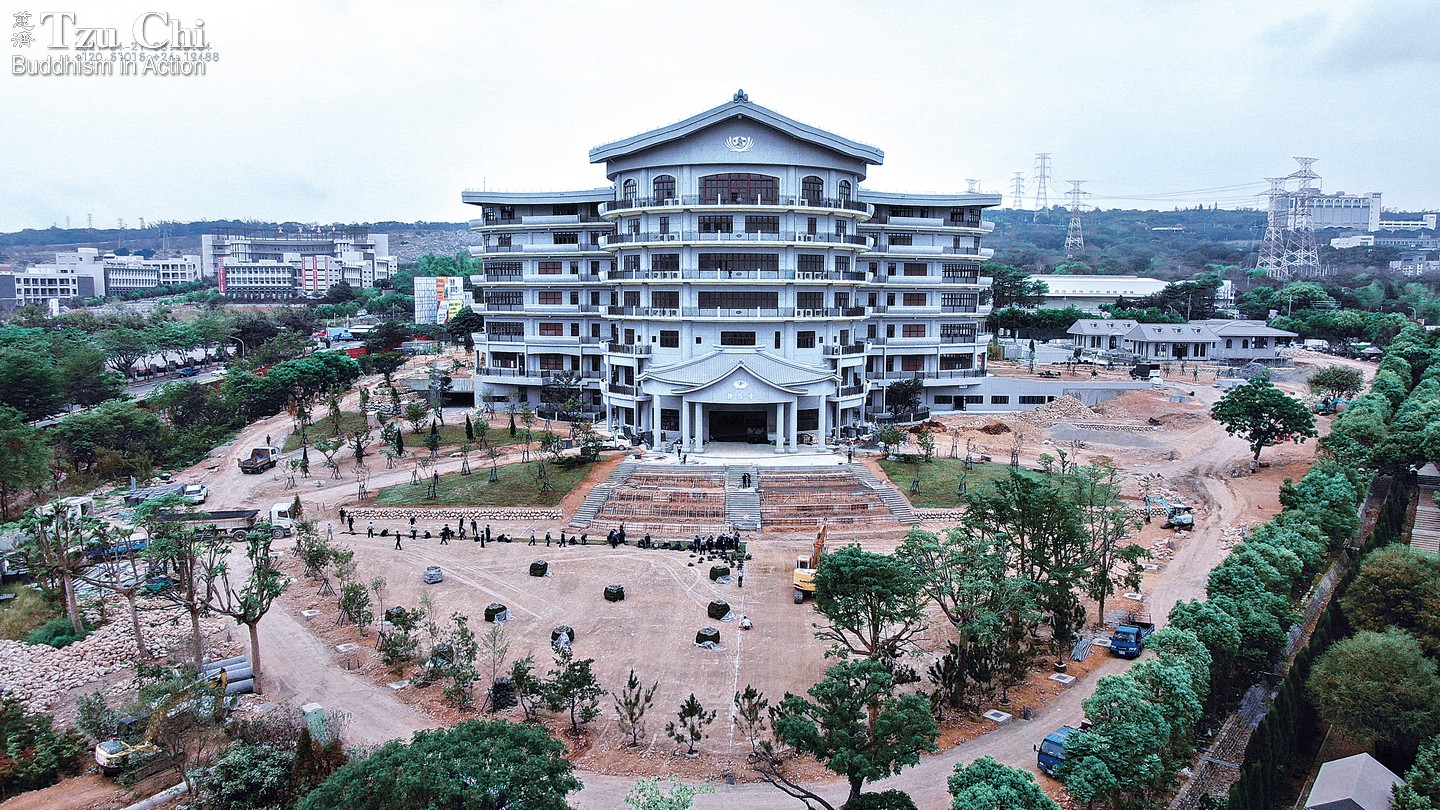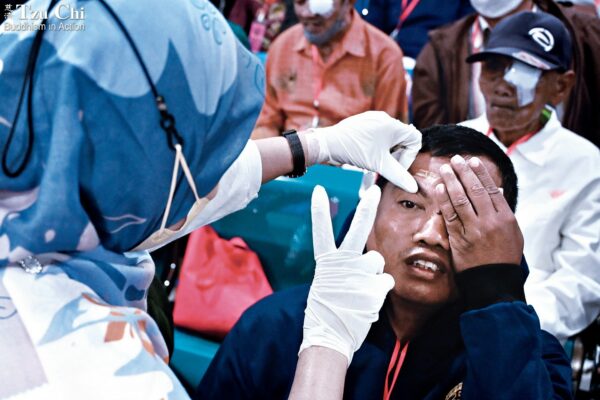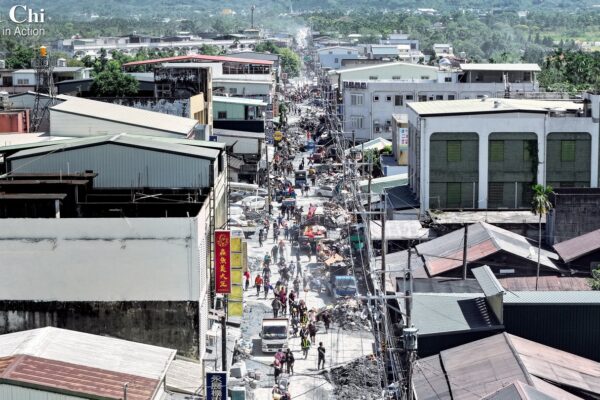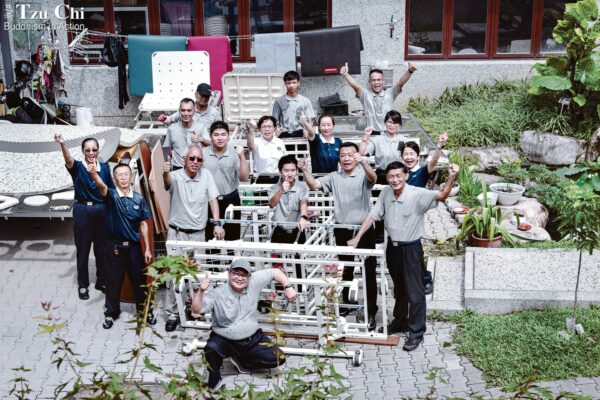Narrated by Chen Rong-feng
Interviewed and written by Lin Mei-hong
Abridged and translated by Wu Hsiao-ting
Photos by Chen Rong-feng
I’ve loved taking photos since my teenage years. After joining Tzu Chi, I kept growing my photography and videography skills, eventually venturing into aerial imagery. My goal is simple—I want to use my skills to capture the beauty and goodness of the world.
—Chen Rong-feng
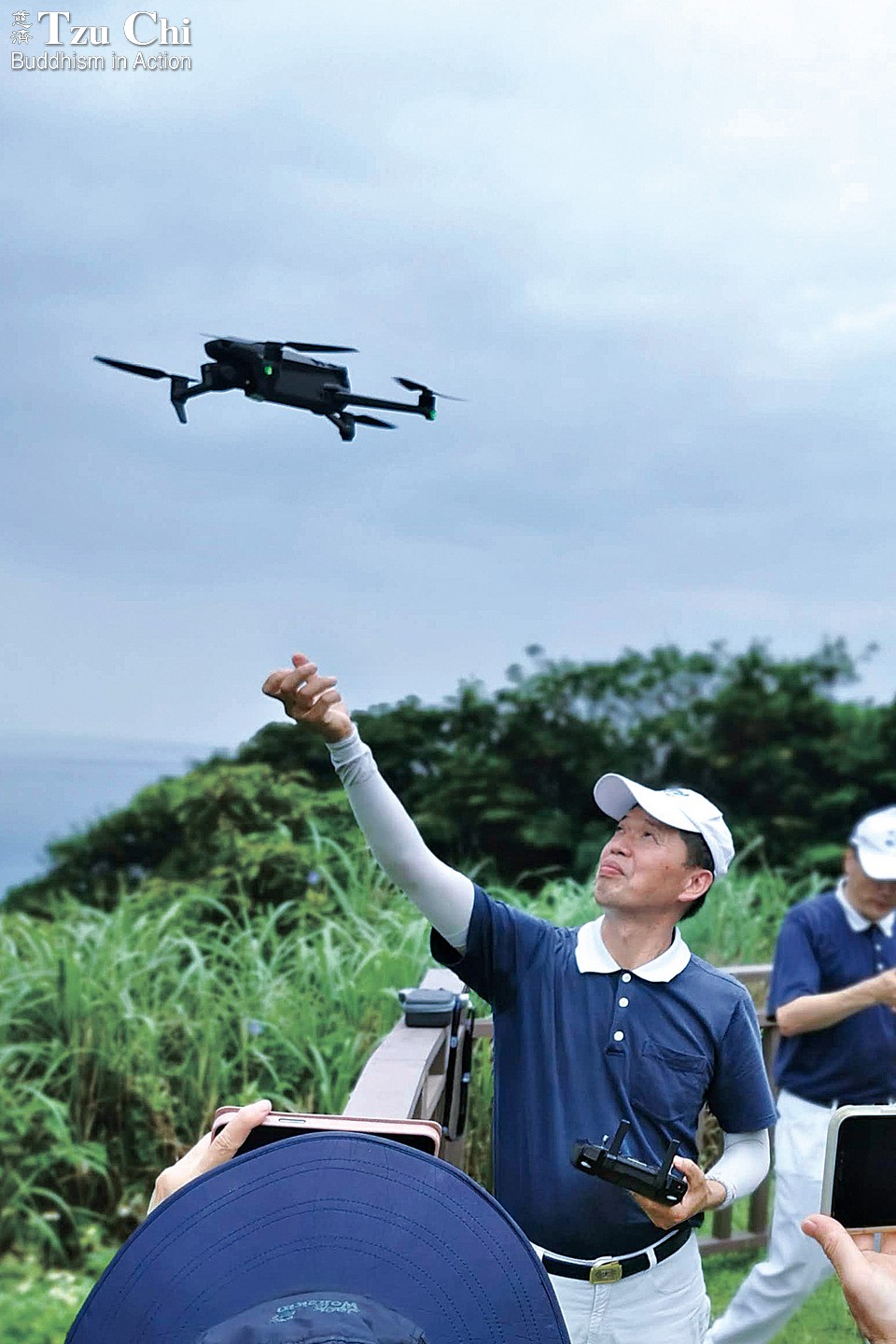
Photo by Lin Mei-hong
I have been curious about “new” things since childhood, especially when it comes to electronic products and devices. In elementary school, I even dismantled a radio my dad bought to study its inner workings. During high school, I developed a fascination with cameras. I recall waking up one morning at two to capture the school gate, using a B shutter speed for 20 seconds. In the interplay of moonlight and car lights, the majestic school gate showcased the beauty of a dignified academic institution. I submitted the work to an intramural competition and won first place.
Time flew quickly after high school. My eldest son was born in 1991, when I was 28. While on a business trip to Japan, I purchased a mini digital video camera, marking the beginning of my journey into videography. In 2006, I attended a Tzu Chi year-end blessing ceremony for the first time. At the volunteer recruitment area, I enthusiastically noted my expertise in photography and videography on a form. Soon thereafter, I received an invitation to join Tzu Chi as a documenting volunteer. I began training in 2008 to become a certified volunteer.
I always followed my own approach through my years of taking photos, doing things as I liked. When I first joined the foundation, I was uncertain about which aspects of a Tzu Chi event to capture. I vividly recall my dissatisfaction with my work at my first Tzu Chi camp. However, when I submitted the photos I had taken to Jian Hong-zheng (簡宏正), the coordinator for the Image Team, I was pleasantly surprised. Looking at my photos, Brother Jian exclaimed, “Everything I needed is right here!” This affirmation greatly cheered me and set me on my determined journey as a documenting volunteer, motivating me to continuously refine my skills.
In early 2010, I joined fellow Tzu Chi volunteers from Taiwan on a mission to Guizhou Province, China, to distribute aid to the needy. When we arrived at the distribution venue in Pingyan Township, Luodian County, we were greeted by the heartwarming sight of hundreds of villagers and children forming two rows, applauding and warmly welcoming us. The sight moved me deeply. I found myself wondering, “What have I done to deserve such warmth from people I have never met?” I followed the other volunteers without saying a word, afraid that if I spoke, tears of emotion would spill from my eyes.
During home visits, we were welcomed into their households as if we were part of their family. This heartfelt reception stemmed from the love nurtured by my fellow volunteers during their ten years of work in Guizhou. I felt deeply grateful that my role as a documenting volunteer brought me to Guizhou, allowing me to be showered in such warmth while I captured one poignant scene after another through my lens.
The rural homes we visited were typically basic, crude structures that provided minimal shelter from wind and rain. I vividly remember a home visit to the Li family. Mr. Li had suffered a bone fracture, and lacking the financial means for medical treatment, his arm had become deformed. His wife, experiencing back pain, struggled to carry water for the family. The family had no source of income at all. We checked their pot and saw some poor-looking corn porridge inside. When we learned that such meager fare was their main food for three daily meals, I couldn’t contain my emotions. I rushed outside and began crying uncontrollably.
I used to think that crying was embarrassing for a man, but I couldn’t hold back my tears that day. They just couldn’t stop flowing. It was the first time I had shed tears in 40 years, and I must have cried without stopping for a good half hour.
After this trip to Guizhou, I set aside my love for the pursuit of enjoyment and pleasure. Before, I used to travel abroad for sightseeing once or twice a year. Although such travels brought me happiness, the joy was short-lived. The charitable mission to Guizhou, however, left an indelible mark on me. After that trip, almost every time I traveled abroad, it was for Tzu Chi.
Innovative solutions
I faced several challenges after taking on the role of coordinator for a community documentation team. At the time, our documenting volunteers lacked a dedicated database for their work, making it difficult for some of them to find photos to complement their articles. To address this issue, I collaborated with other volunteers to establish a dedicated File Transfer Protocol platform. This platform allowed our volunteers to easily upload and share data. Additionally, I worked with computer engineers to develop an online event schedule, which helped us post information about our community’s Tzu Chi activities. This saved us a lot of time and money. It reduced the need for phone calls to disseminate event information and encouraged greater participation from those interested in the events.
The challenge of not having a storage system for articles and photos extended beyond our specific community. I recognized that our volunteers’ hard work was not adequately preserved and that a considerable amount of time and manpower was spent gathering relevant data, so I began contemplating cross-district data integration. I started collaborating with Zhang Ting-xu (張廷旭), a volunteer from Tzu Chi’s central Taiwan Information Technology Team. We developed a dedicated software system for data integration. After we were successful, Zhang remarked in friendly banter, “This software was created at your request; you’re responsible for promoting it!”
In response, I reached out every day to the coordinators for documenting teams in different districts in central Taiwan, providing explanations and tutorials on archiving using our software system. After a year of efforts, relevant records from across the central Taiwan district began to be uploaded to the system, easily accessible through a simple search. Eventually, this system expanded to include other areas in Taiwan.
Later, I became the coordinator for Tzu Chi’s central Taiwan Image Team. I pondered: “How can I attract new volunteers? More importantly, how can I rekindle the initial enthusiasm of our senior volunteers?” I decided to introduce courses in 2018 to tackle these questions. The course design was diverse, allowing instructors to use personal photos for storytelling or inviting professional photographers to engage with our volunteers. Photos can speak volumes; for instance, instructor Chen Jian-hua (陳建華) used pictures of his mother to reflect on accompanying her through the last leg of her life, while Li Ying-qing (李盈青) shared the challenges she had experienced in her life through photos documenting her growth and development. Everyone got to know the instructors better through their photos, but also gained insight into the art of storytelling through photography.
I also collaborated with bakeries and dessert shops, requesting their products for volunteers to photograph. The resulting photos became promotional materials for the businesses. I invited commercial photographer and Tzu Chi volunteer Ye Tang-ming (葉唐銘) to share insights on composition and the use of light and shadow in pastry photography. During class, everyone arranged and presented the pastries provided by our collaborating businesses. Ye reminded everyone that the direction of light sources would change at different times, resulting in various effects, and that photography is subjective, with no definitive right or wrong. Following the instructor’s guidance, participants took their photos and then uploaded their work to a messaging app group chat for immediate sharing and discussion. Afterwards, the participants were able to eat the pastries, bringing sweetness to palates and hearts alike.
At the end of the course, I used the Kahoot! app as a fun, interactive way for participants to review what they had learned. I gave prizes to the top three scorers in the review game. It was a lot of fun to see participants navigate through a series of tense and joyful moments during the activity. Creating classes that were eagerly anticipated by our volunteers became what I considered my greatest achievement.
Chen Rong-feng developed a passion for photography during high school and often went outdoors for photoshoots.
Courtesy of Chen Rong-feng
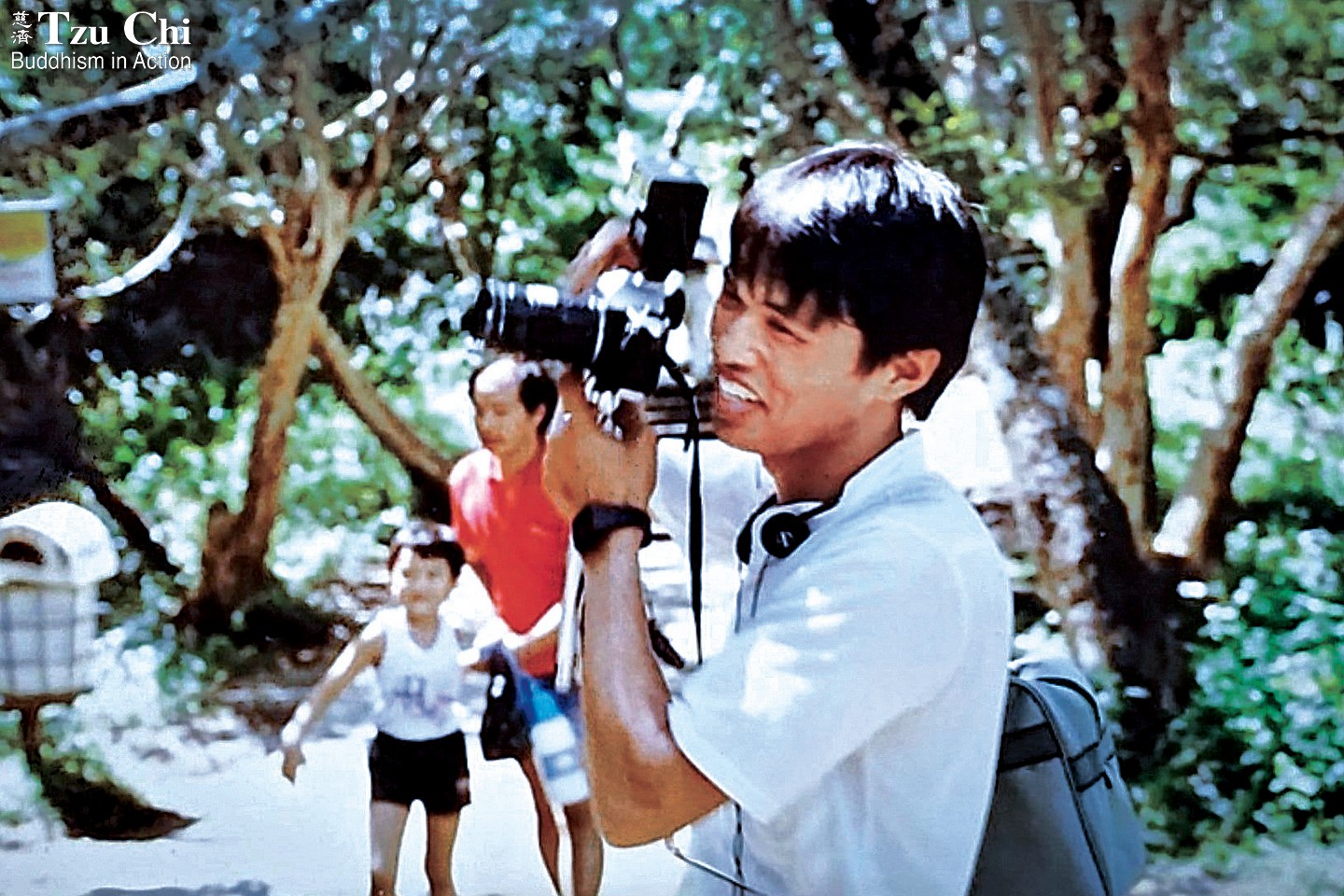
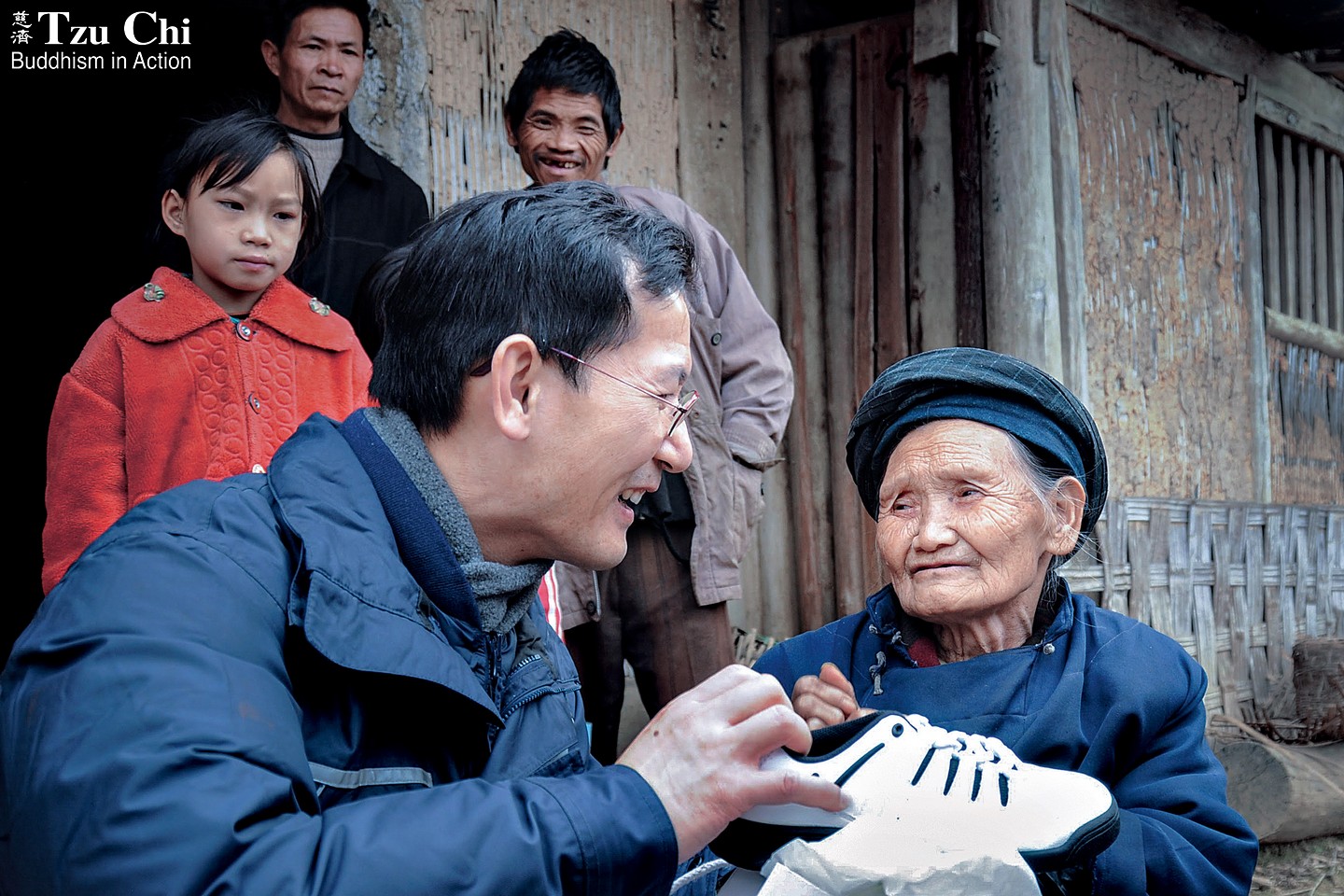
Tzu Chi volunteers went to Luodian, Guizhou, China, in 2010 to distribute aid to the needy. Here is a touching moment captured by Chen Rong-feng.
Aerial imagery
My foray into aerial imagery began in 2014. That year, Tzu Chi held a Buddha Day ceremony at the Taichung Intercontinental Baseball Stadium in Taichung, central Taiwan. While I was documenting the ceremony with a camera, a buzzing sound caught my attention. Following the sound, I looked up and saw a drone for the first time. Involuntarily, my gaze followed it as it soared into the sky, and I found myself drawn closer to the drone operator. I was completely mesmerized when I saw the spectacular aerial view captured by the drone.
I couldn’t get the image of a drone out of my mind after that and purchased a drone the following year. I practiced flying it whenever time allowed and shared the videos I took online. Some people left negative comments upon seeing my footage, saying things like: “It’s not just about flying high in aerial imagery.” Instead of becoming disheartened by such comments, I recognized my inadequacies from their perspectives and encouraged myself to keep improving my skills.
I established an aerial imagery team in 2018, with the goal of sharing my drone flying skills and learning from more enthusiasts. The next year, I joined the Taichung City Fire Department’s aerial imagery unit to contribute to disaster relief efforts. This involved surveying the origins of fires, assisting on-site commanders in making accurate decisions for firefighting, participating in search and rescue missions for missing mountain climbers, and deploying lifebuoys for drowning victims. The aerial imagery team I established also collaborates with the Coast Guard Administration to fly over the sea and document the ecology of white dolphins.
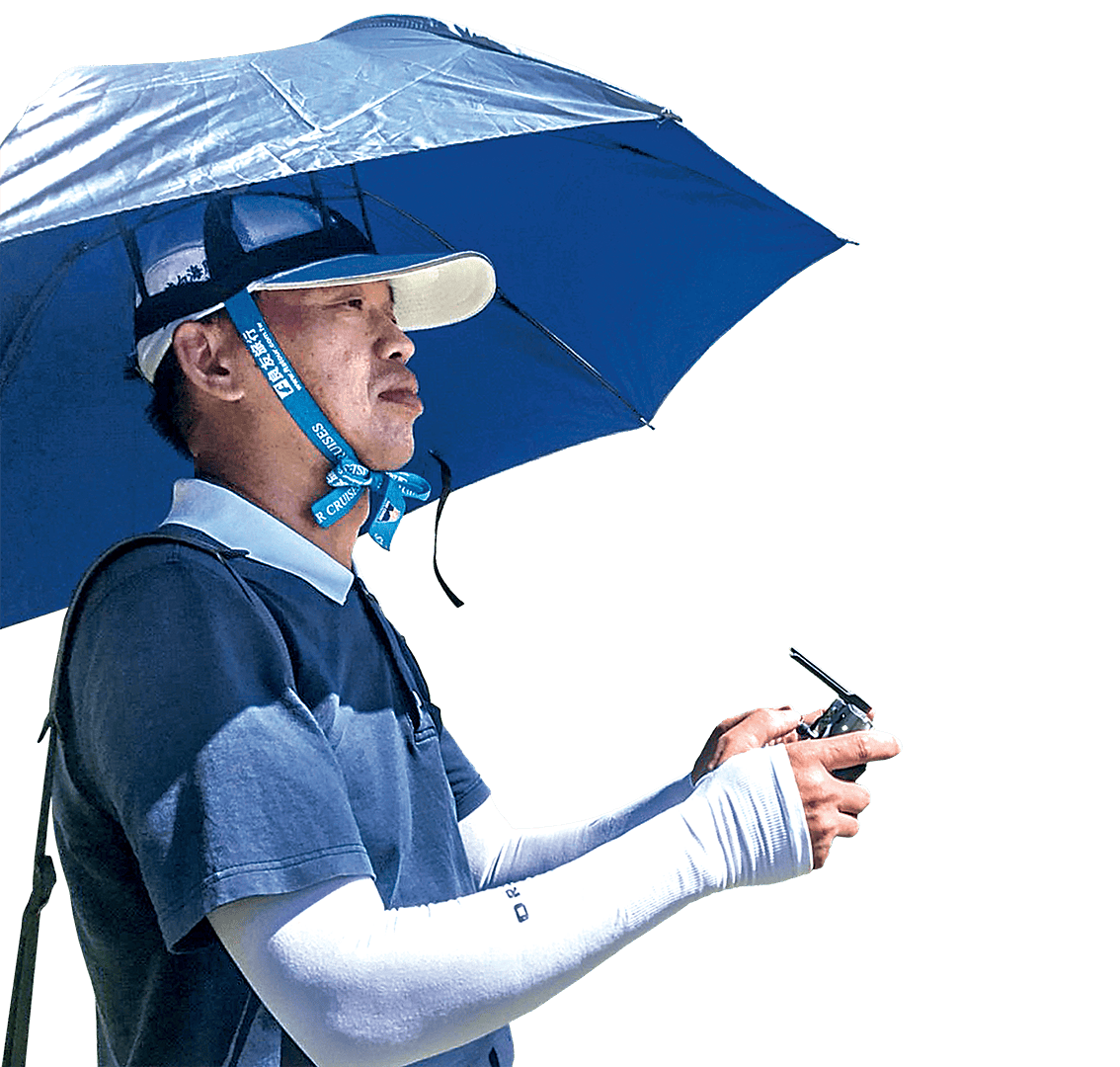
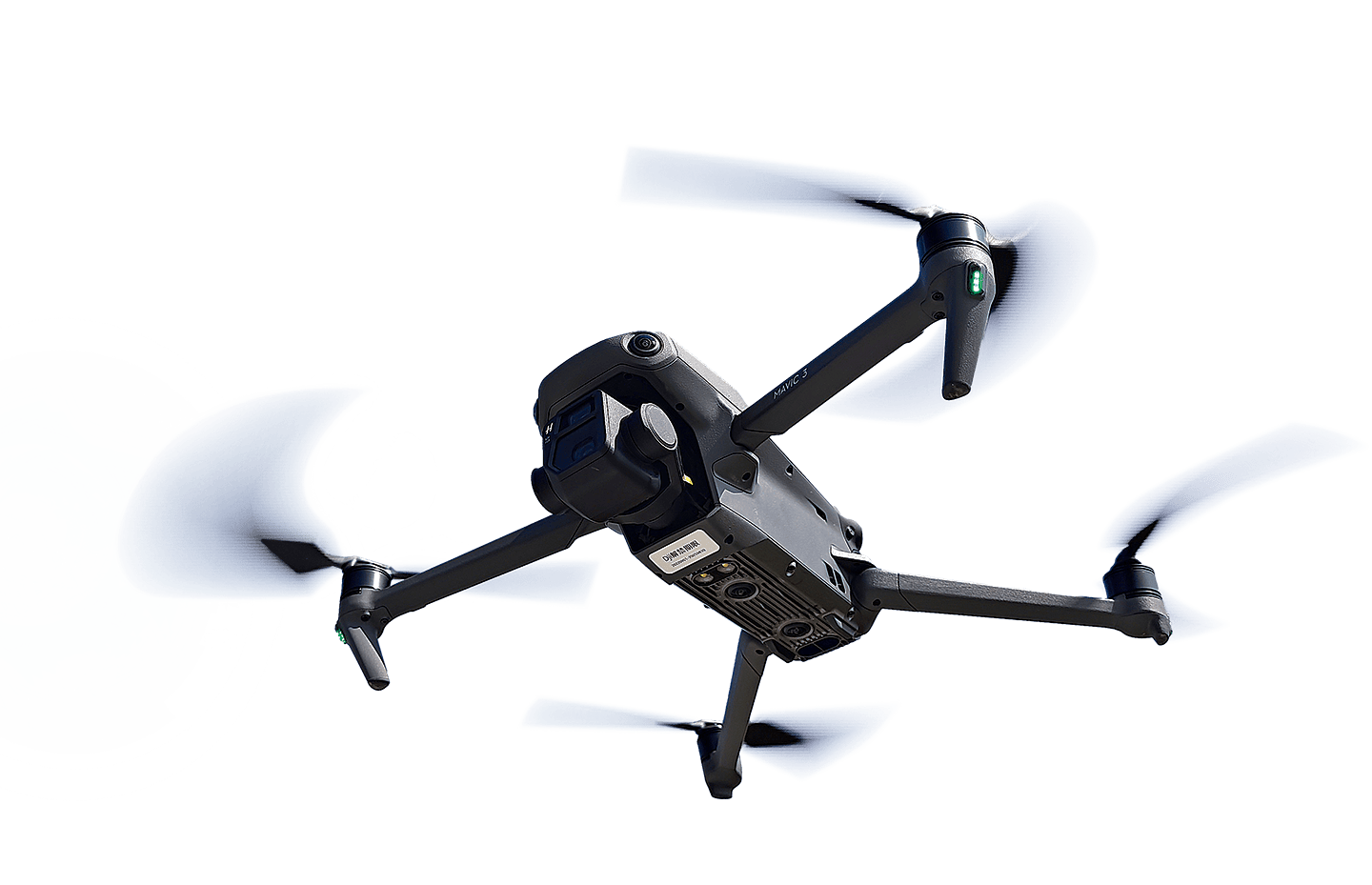
Driven by a passion for aerial imagery, Chen Rong-feng organized a Tzu Chi drone team to enhance the perspective of documentary photography and filming.
Courtesy of Chen Rong-feng
In 2020, the Taiwanese government began regulating drones. To help fellow Tzu Chi volunteers pass licensing exams, I began designing mock test questions and organizing flying technique practice sessions in open areas. Everyone endured the scorching sun without shade during the practice sessions, so I offered cool refreshments and snacks for relief. We mutually encouraged and learned from each other. A total of 68 volunteers have successfully obtained certifications.
Organizing a flying practice session, whether for exam purposes or not, entails careful planning. It includes finding an appropriate outdoor space, providing diverse flight training, and prioritizing safety. Once an outdoor space is chosen, I conduct repeated site inspections. In addition to training in mountain and sea flying techniques, I incorporate rescue scenarios. As an example, I strategically place five mannequins in grassy areas or along riverbanks, turning the exercise into a friendly competition to see who can locate the most mannequins in the shortest time.
I’ve been with Tzu Chi for over 15 years. The number of volunteers participating in our photography classes or learning sessions has grown from dozens to over 200. The aerial imagery team has also welcomed many new members, with participants now spread across Taiwan. Our numbers are steadily increasing. While one person may move swiftly, a group can go much farther. Preserving Tzu Chi’s history is not a task achievable by one person alone; it requires the collective effort of many. That’s why we must encourage participation and new blood in our documenting work.
I’ve seen a constant evolution in photography and video equipment during my time with Tzu Chi. My viewfinder has expanded from ground-level to aerial perspectives. I enjoy learning and growing along my life’s journey. I’m not one with grand plans. My goal for life is simple—to use my skills and abilities for the common good. As I share on my Facebook page: “My love for photography dates back to my youth. Images and visuals drive me forward. From photography and videography to editing and aerial imagery, I’m on a continuous learning journey. I am genuinely passionate about my work. I’m Chen Rong-feng [陳榮豐].”
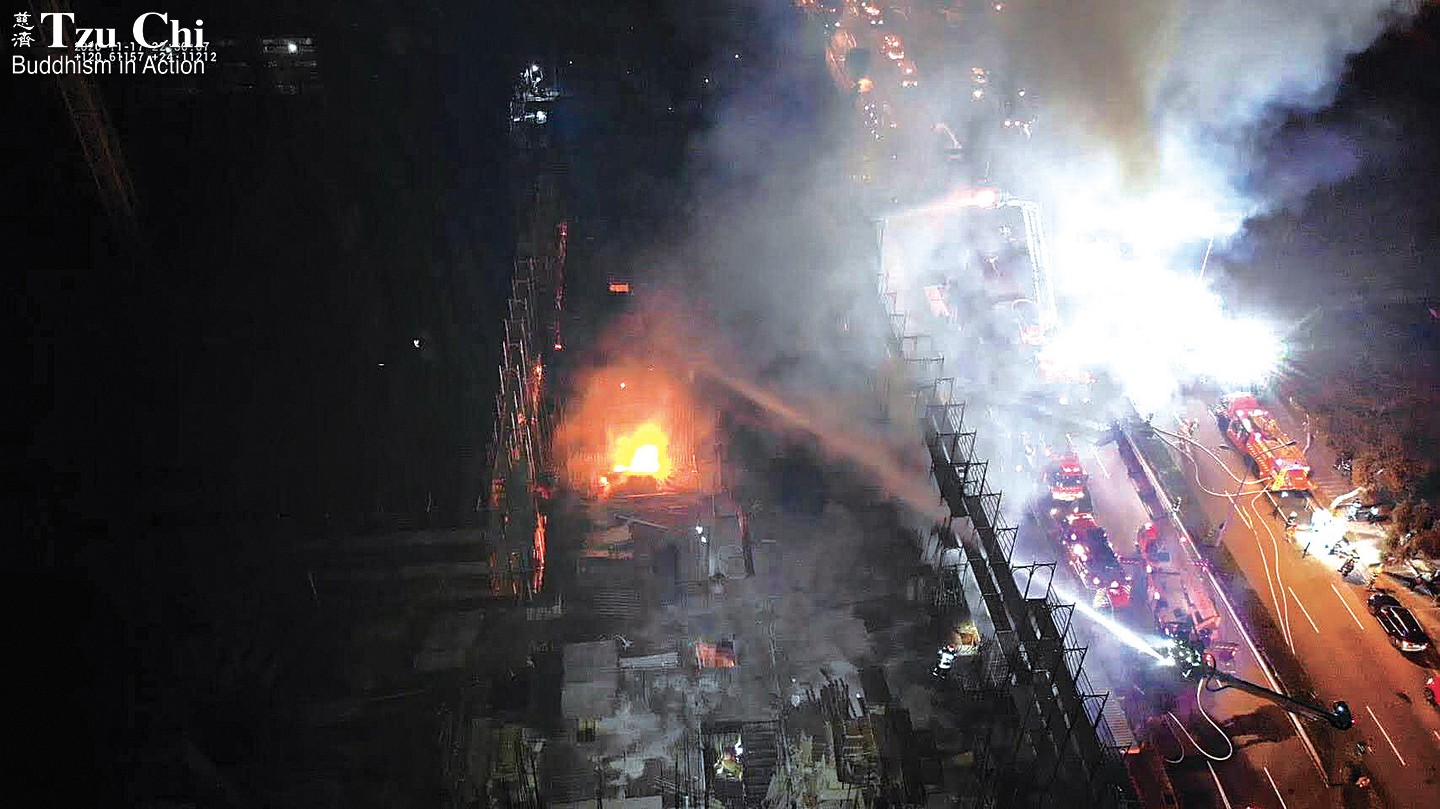
Chen Rong-feng used a drone to aid in aerial reconnaissance and investigate the point of ignition at a fire scene in Taichung, central Taiwan.
In 2021, Chen Rong-feng captured aerial footage of the Tzu Chi Dongda Campus in central Taiwan after the main construction was completed and landscaping was beginning.
